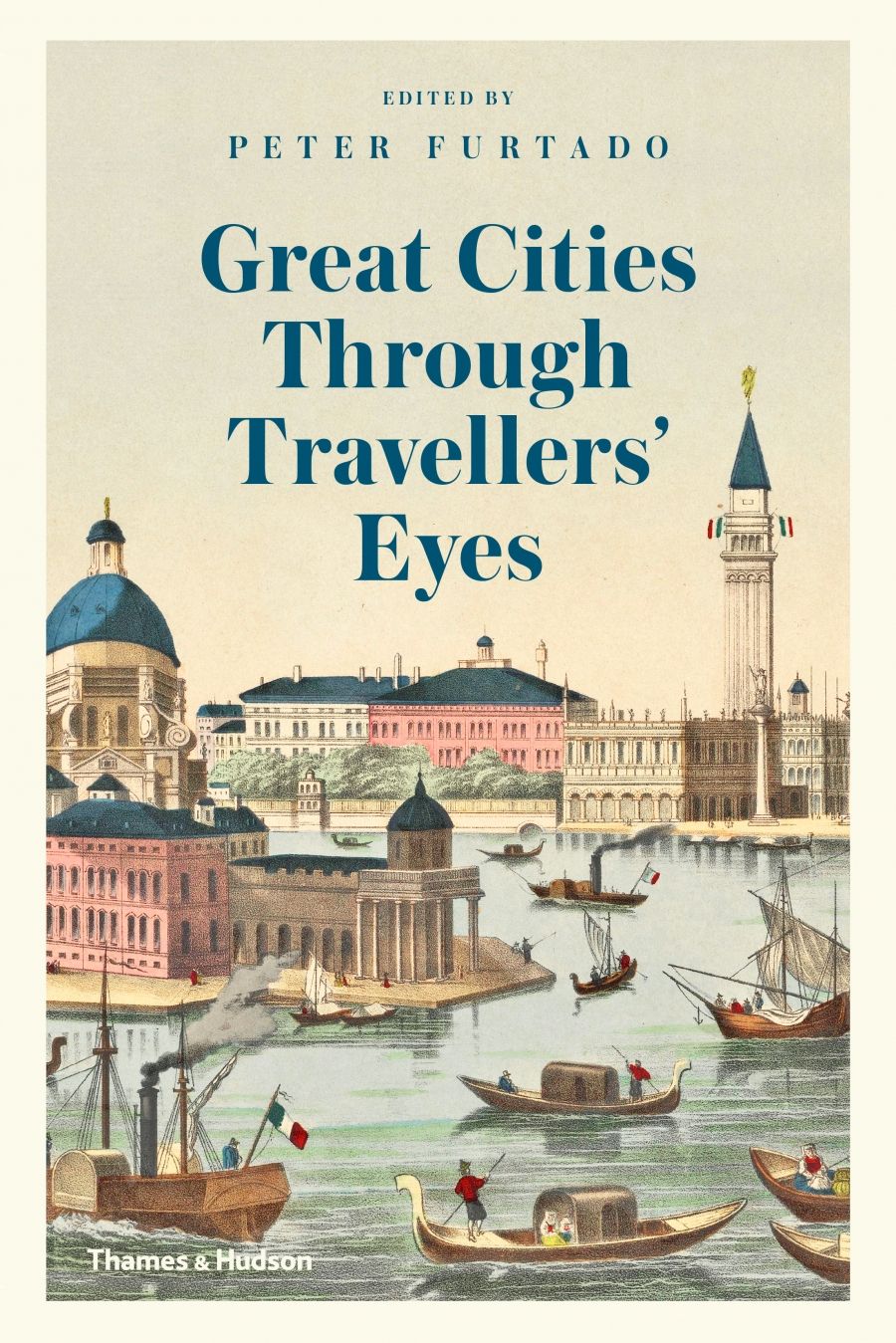
- Free Article: No
- Contents Category: Travel
- Review Article: Yes
- Custom Highlight Text:
‘The tourist travels in his own atmosphere like a snail and stands, as it were, on his own perambulating doorstep to look at the continents of the world. But if you discard all this, and sally forth with a leisurely and blank mind, there is no knowing what may not happen to you.’ Thus, in 1928, British writer Freya Stark, an intrepid traveller, described the distinction between a traveller and a tourist. British historian Peter Furtado’s new anthology, Great Cities Through Travellers’ Eyes, is squarely aimed at the former. In it he collects the writings of a diverse group of writers about thirty-eight different cities, over a period dating from ancient times to the 1980s (more on that later). Some writers, such as Marco Polo, Hans Christian Anderson, and Simone de Beauvoir, are well known, others less so.
- Grid Image (300px * 250px):

- Book 1 Title: Great Cities Through Travellers’ Eyes
- Book 1 Biblio: Thames & Hudson, $39.99 hb, 368 pp
Furtado introduces each city with a brief outline of its history, then includes four or five extracts from different writers about that city, and explains why the writer was there. Many of the writers sing the praises of their host city. Charles Dickens, in Rome in 1844, was deeply moved by the sight of the Colosseum: ‘To see it crumbling there … is to see the ghost of old Rome, wicked, wonderful old city … It is the most impressive, the most stately, the most solemn, grand, majestic, mournful sight conceivable.’ Botanist and birth-control advocate Marie Stopes, who in 1907 spent time in Tokyo, found the Imperial Palace ‘one of the most impressive views I have ever seen in a city – a sight that brought tears to one’s eyes.’ The famous medieval traveller Ibn Battuta, who travelled 112,000 kilometres over thirty years, found Cairo in 1326 ‘mistress of broad regions and fruitful lands, boundless in multitude of buildings, peerless in beauty and splendour’, and British writer Ian Fleming in 1959 described Hong Kong as ‘the most vivid and exciting city I have ever seen’.
 The intersection of State and Madison Street in Chicago, 1889 (photograph via Chicago History, ichi-23658)
The intersection of State and Madison Street in Chicago, 1889 (photograph via Chicago History, ichi-23658)
No doubt in the interests of balance, Furtado also includes extracts from travellers who are unimpressed with what they see, and who do not hesitate to say so. In 395 CE, Synesius of Cyrene said of Athens, ‘May the sailor who brought me here die miserably.’ Rudyard Kipling, seeing Chicago in 1889, said, ‘having seen it, I urgently desire never to see it again’. French literary critic Hippolyte Taine did not find London to his liking in 1885: ‘After an hour’s walk in the Strand especially, and in the rest of the City … one meditates suicide.’ Queen Victoria, who, with Prince Albert, visited Paris in 1855 as a guest of the Emperor Napoleon III, was underwhelmed by Notre Dame: ‘Except the beautiful carving of the Choir there is nothing particularly to admire in the interior’. She did, however, enjoy the view from her rooms of the Arc de Triomphe (‘rising so majestically and beautifully’), so much so that she sat on her balcony and sketched it.
Other writers display their own prejudices (often those of their age) when they venture beyond their home shores and use language that is offensive to today’s reader. British Catholic clergyman James Laird Patterson in 1849 visited Alexandria, where he found the sight of Muslims praying to Mecca ‘a frightful and diabolical parody of Christian practices’ and the supplicants ‘held in the bonds of the devil’. British soldier and explorer Harry de Windt in 1887 wrote of the people of Beijing (then Peking), ‘There is no more insolent, arrogant thief than the lower order of Pekinese’, who, in his view, ‘conspired to fulfil Western clichés of themselves: inscrutable and all alike’.
Perhaps the last word on (gratuitous) insults to a country or its culture belongs to Mark Twain, who visited Paris in 1869. There, he and his companions ‘put unoffending Frenchmen on the rack … in the incomprehensible jargon of their native language, and while they writhed we impaled them … with their own vile verbs and participles’.
Some writers discovered things that surprised them. In 1788, Dr John White, en route to Australia with the First Fleet, stopped in Rio de Janeiro where he was struck by how long the women grew their hair; he saw one woman whose hair dragged along the ground. Others saw signs of trouble to come. When writer Thomas Wolfe visited Berlin in 1936 and witnessed the ‘sheer pageantry’ of Hitler’s Olympic Games and the ‘organising genius’ of the German people, he notes that, ‘it was as if the Games had been chosen as a symbol of the new collective might’.
Great Cities Through Travellers’ Eyes is a highly engaging selection of writing from a diverse group of travellers through the ages. My only quibble is with Furtado’s decision to exclude travel writing after the 1980s on the basis that cheaper flights and social media have changed the travel experience too much. That aside, it is a marvellous resource for both the seasoned traveller and the armchair traveller.


Comments powered by CComment